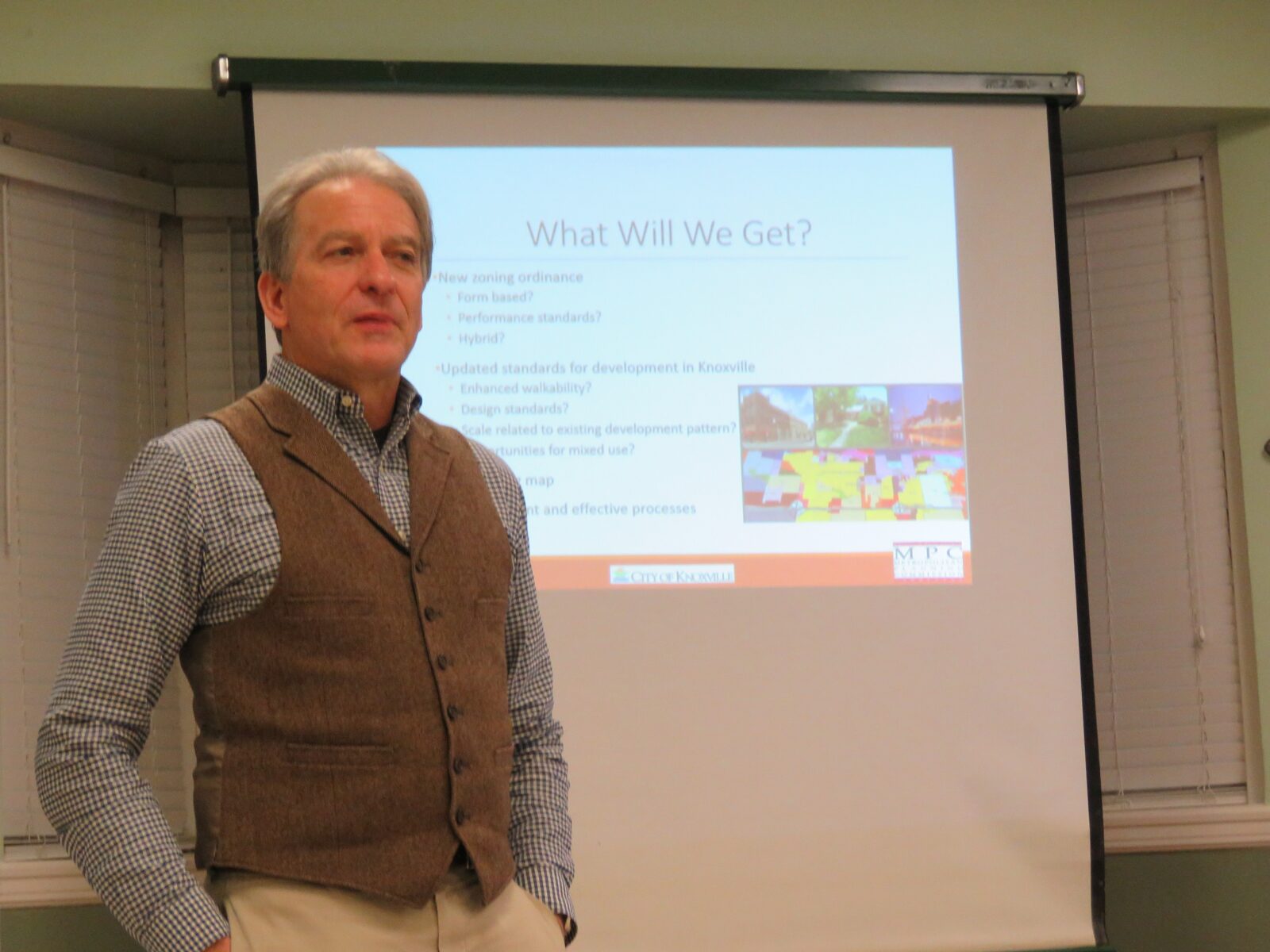One of the “driving forces” behind the need for the proposed Recode ordinance is the projected growth of the city’s population over the next 20 years. This is manifested in several ways, including the draft’s addition of multi-family and mixed-use housing along corridors, adding higher density residential zones, reducing the minimum lot size (e.g., from 7,500 sq. ft. to 5,000 sq. ft. in RN-2) and authorizing accessory dwelling units (ADUs) in every residential zone and neighborhood.
There’s a built-in bias toward greater density.
In support of this, Gerald Green, Metropolitan Planning Commission executive director, stated in a recent WUOT radio interview that Knoxville will add some 1,800 people per year, based on the assumption that 30 percent of the projected 20-year county population growth of 120,000 (through 2040) will occur in the city. Yet the city’s historic growth rate has been basically stagnant over the past 50 years – although we have had a population growth blip after the 2008-10 mortgage collapse subsided and construction picked up in the past several years.
According to this MPC chart, the city’s population reached 187,000 last year.
Population Guesstimates. The basic formula for estimating population change is: Births – Deaths +/- Migration.
From a layman’s viewpoint, it would seem that the Baby Boomer death rate rivals or exceeds births among late-blooming millennials, who seem slower to hitch up, compared with earlier generations. So, is the master plan to attract more in-migration?
I checked the asserted 28.8 percent (which Green rounded up on air to 30 percent) growth rate with the population gurus at the University of Tennessee Boyd Center for Business and Economics. They estimate county population changes and provide projections going forward for the state government.
No one (not the U.S. Census Bureau nor the Tennessee state government) regularly estimates city population projections. No real data are available for those smaller data bits.
Thus, we have a calculated city percentage of the county growth number. Looking backward, it went from 9.9 percent in 2000-2010 to 28.8 percent during 2010-2017. I was told this does not equal rate of growth, which might be used to project future city growth. It is only the historic or current share of county growth. That number regularly changes.
So Green’s 20-year city-population estimate going forward is unfortunately not a reliable forecast. The best you might do is study building permits, property transfers and other available demographic factors to try to calculate one.
But even so, this “current blip” might be a reflection of the nationwide housing mortgage drought after the 2008 financial collapse that halted most growth, followed by catch-up building several years later. Also, even a few of those new UT-area apartment high-rises and new downtown condos could easily explain the recent “growth” surge.
What’s the point? 1) Take long-term population forecasts with a grain of salt. 2) Be sure you know what path we are embarking on before the dense forest closes in on the view. Let’s look at the path.
In December 2016, the city approved a contract with Chicago-based Camiros to update the existing zoning code, ostensibly to edit or remove awkward or defunct provisions, add modern graphics and summary charts, and increase the ease of use.
That simpler goal morphed into the current Recode Knoxville, rewriting the entire document. New is not necessarily bad. But that process initially jettisoned hammered-out use standards (for home occupations, daycare, etc.) and approval standards for uses on review, etc., that came with interpretive precedents that neighborhoods and developers understood and accepted. Recode also helped implement the Plan-ET vision-quest, with its dreams of inner-city density and fewer cars – an untested, non-adopted “plan” gathering dust on the shelf for several years.
Mandating inner-city density required a rewrite, not just a code clean-up effort. Of course, there are improvements mixed in with the more exotic stuff. But there is also potential disruption of cherished neighborhood characteristics where people have intentionally chosen to live, investing their hard-earned housing dollars.
So, we need to tread carefully through the final edit and adoption of this zoning rewrite. With a bit more effort it can work. But let’s not toss the baby out with the bath water!
Nick Della Volpe is a retired attorney and former member of Knoxville City Council.

